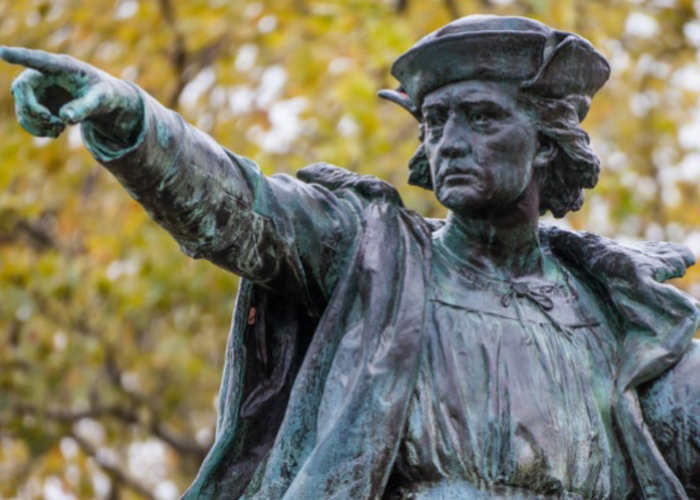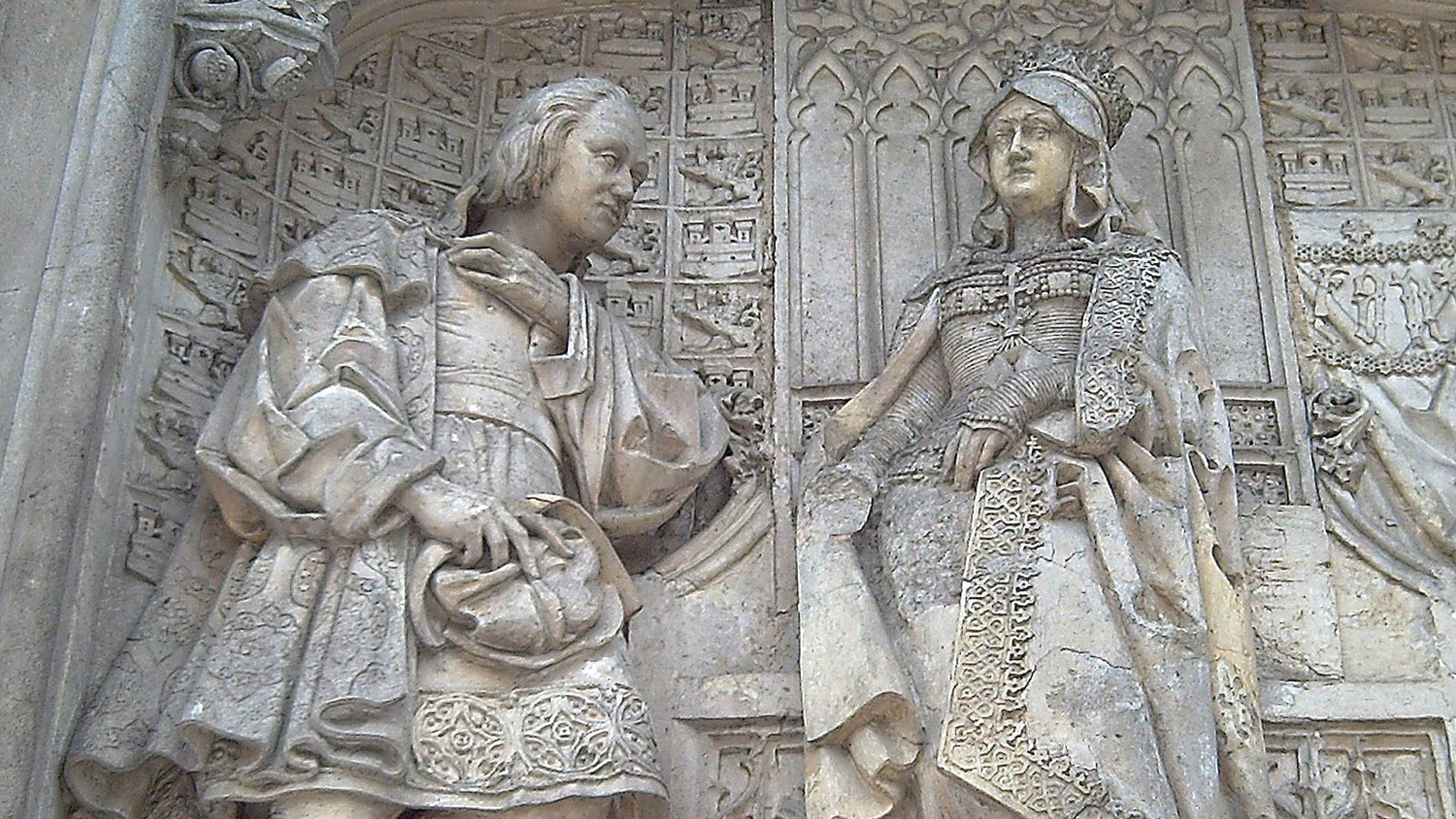Palos August 3, 1492: the Italian admiral navigator Christopher Columbus sets sail from the port of Palos de la Frontera, Portugal. The three caravels la Niña, la Pinta, and la Santa Maria head west to forge a new, shorter route to the Far East than the current one around the African continent. About ten weeks later, on October 12th, the three ships landed on the shores of San Salvador Island. This is how, somewhat by chance, the eventual European discovery of a continent that would be called America took place.
Columbus believed he had sailed all the way west to India, but in fact, had miscalculated the size of the Earth—and the Atlantic Ocean. The Atlantic, at the time called Mare Oceano (“Ocean Sea”), was considered an endless expanse of water where it was believed horrible sea creatures and dangerous monsters lived and natural disasters occurred to anyone who might venture there. The Far East was still far away, since beyond the Atlantic lie more continents and another ocean.

Before venturing out, Christopher had long studied the existing maps and taken inspiration from the incredible stories of another Italian traveler, Marco Polo from Venice. Covering the Silk Road mostly by foot in the thirteenth century, Polo had prodigiously come upon China. His book of travel stories, Il Milione, collected by Rustichello da Pisa, was a source of inspiration for the young Columbus, whose stubbornness and will lead him through a time when no one would sponsor his venture.
Not even King John II of Portugal was interested. In 1484, Columbus brought his idea before the king, but he refused to pay the necessary money to organize such an improvised and pioneering expedition. Moreover, all the Portuguese king’s efforts were focused on circumnavigating Africa.

Isabella of Castile, the Queen of Spain, thought differently, and the most powerful European woman became Columbus’ first financier. The journey was fraught with challenges, beginning with the faulty maritime route calculations that caused food and water supplies to quickly run out. In addition, the compasses went mad, reporting different indications than those written on the maps. Mutiny was always around the corner.
Columbus finally promised the crew that if they didn’t reach land in a week, he would bring them back home. On October 12th they reached San Salvador in the Bahamas, fully convinced they had landed in India. Tobacco, parrots, and a little gold were the expedition’s only spoils, but the discovery itself was received and earned Columbus other ships for new voyages (all of which were to the Bahamas and Central and South America, not to North America). In the end, however, he died in oblivion—alone and forgotten in Valladolid, Spain, in 1506.

America was then named after Amerigo Vespucci, the Italian explorer who espoused the then-revolutionary concept that the lands Christopher Columbus sailed to in 1492 were part of a separate continent. A map in 1507, by Martin Waldseemüller, was the first to depict this new continent—New World—with Amerigo’s Vespucci’s Latinized name “America”. Christopher Columbus was credited only later: despite never landing in North America, his enterprise has paved the way. To those who mocked him, telling him that with the economic means and other resources he received anyone would be able to accomplish his famous first expedition, Columbus responded with the example of the famous egg named after him.

The Italian Girolamo Benzoni, in his 1565 book Historia del Mondo Nuovo (“History of the New World''), tells how Christopher challenged those who criticized him to perform an equally simple action: balance an egg on the table, preventing it from falling. No one succeeded, convinced that it was impossible. They then challenged Columbus to do it himself. He broke the egg’s base and set it on the table, where it remained upright. This story is probably misattributed to Columbus since Florentine architect Filippo Brunelleschi had used the metaphor of the egg a century earlier to explain the construction dynamics of Florence’s Santa Maria del Fiore cathedral. As the story goes, however, Columbus had the last word: “The difference, my lords, is that you could have done it, but I did!”
Barbara Benzoni
Barbara Benzoni was born in Milan and lives between Rome and Tuscany. She is devoted to USA, the land of courage and innovation. She’s Peter's super-lucky mum and Ale's wife. Cinema, art, good food and only beautiful things are the themes of her existence. With a degree in Italian literature and a Masters in Sports Management she can both enjoys books and basketball matches. In 25 years she has been organizing sport events all over the world and she’s been lucky enough to meet the greatest champs ever. Curiosity in everyday life and people are her drivers. Her personal icon is Mohammed Ali : "It's not bragging if you can back it up".

